Internal linking: essence, advantages and optimization tips
-
Larisa Shishkova
Copywriter Elbuz
Internal linking is like an invisible network that connects your pages into something larger. With simple strategies, you can increase your site's visibility and improve the user experience. Let's unlock these secrets together and figure out how to turn your content into a powerful tool!

Glossary
-
📄 Internal linking - the process of placing links to pages of the same site to improve navigation and usability.
-
🔗 SEO (Search Engine Optimization) — website optimization to increase its visibility in search engines.
-
🌐 Site structure - organization of content on the site , which affects the ease of navigation and page indexing.
-
📅 Relevance of content - degree of correspondence of information to page for current user requests and trends.
-
🧩 Link relevance - correspondence of the link text to the content landing page.
-
✒️ Anchor text - text to which the user can click to go to the link.
-
🔄 Automatic linking is a system that automatically creates internal links based on specified algorithms or rules.
-
🍞 Breadcrumbs - navigation element showing user path on the site and allowing you to easily return to previous pages.
-
✔️ End-to-end linking - creating permanent links to certain pages from any section of the site.
-
🎯 Contextual linking - placing links in the text taking into account their semantic content.
-
🖼️ Banner linking - using images or banners to create links to other pages.
-
🔍 Monitoring and Analysis - the process of tracking performance internal links and their impact on user behavioral factors.
-
📝 Organic link embedding - natural link placement in the content, without violating its readability and logic.
-
⚖️ Anchor balancing - ratio of different anchor texts to improve the semantics of links.
-
🎉 Best practices - recommendations for optimizing internal linking to improve its efficiency and meet SEO requirements.
-
🚫 Limits on the number of links - recommendations for the maximum allowed number of internal links per page to avoid over-optimization.
-
📊 Overview table - a tool for organizing information about what is desirable and not desirable when creating internal linking.
How to implement internal linking?
When I first came across the concept of internal linking, I can't say it didn't pique my interest. At that time, I was working on my next project - an online store, and the idea of how to connect the pages of a site using cleverly organized links completely captivated me. Some ideas seemed completely revolutionary to me!
.png)
Imagine: we are launching a new product, and, naturally, every page should not only represent it, but also lead to other related products. It seems like a simple task, but how powerful it can be! Once I implemented the internal linking strategy, the results began to speak for themselves. Over the course of a month, we saw an almost 30% increase in the time users spent on the site, and that was not all.
Let's say a customer interested in a new pair of shoes instantly clicked on "Related Products" and found interesting options. This is not just a link; this was the path along which I guided the client, introduced him into the world of my store. And do you know what I noticed? With the increase in the number of such transitions, the loyalty of our customers increased. In a conversation with one of them, he said: “I always find something interesting here!”
So internal links not only guide visitors, but also significantly increase the likelihood that they will return to my site again and again. I suddenly realized that internal linking is not just about navigation. It's about creating connections that lead to true understanding of our content.
At one of the seminars I presented my story, and one of the participants was initially distrustful of the idea of internal linking. "How can this help sales?" - he was surprised. But after the discussion and the examples I gave, his view changed. He was inspired and implemented this strategy. A few months later, at a meeting, he proudly shared the results: sales increased by 40% after they began using internal linking actively!

So, how to organize internal linking correctly?
-
📝 Analyze content: Analyze existing pages of your site. Determine which pages are logically connected.
-
🔗 Create connecting links: Insert links to other content pages where it makes sense. These could be links to product pages or blogs that may be of interest to the user.
-
🔍 Use anchor texts: Don't forget about link texts! They must be attractive and clear to users.
-
🌐 Monitor the health of links: Check regularly your internal links are broken. This will not only help with user retention, but will also improve SEO.
-
🎯 Use breadcrumbs: This will be an excellent navigation tool for your visitors, allowing you to quickly see the structure of the site. Breadcrumbs was one of the solutions I used and it greatly simplified the user experience.
In everyday practice, it is important to remember that internal linked content not only makes navigation more convenient, but also forms a holistic view of your website in the eyes of users and search engines.
“Internal linking is not an easy task, but there are many possibilities in turning every link into a bridge that holds parts of your blog or site together.” . — Andrey Tereshchenko, SEO company Rozetka.
Table: How to start internal linking from scratch
| Step | Action | Description |
|---|---|---|
| 1. | Content Analysis | Examine existing pages. |
| 2. | Link strategy | Determine what content is linked. |
| 3. | Link embedding | Start inserting links in the text. |
| 4. | Checking links | Regularly monitor the functionality of the links. |
| 5. | Using auxiliary tools | Introduce breadcrumbs for easy navigation. |
I sincerely hope that my experience inspires you to implement internal linking in your project. Despite all the complexities and nuances, it is one of the most effective tools you can use.
The Impact of Internal Linking on SEO
When I first immersed myself in the world of SEO, I was amazed by the power of internal linking. This is an important tool that, as it turns out, can not only improve the structure of the site, but also significantly affect its visibility in search engines. I recently had the opportunity to work on a project that clearly demonstrated this.

We started with a rather confusing site, where pages were distributed chaotically, and users couldn't easily find the information they needed. I remember colleagues complaining that visitors were leaving the site without finding what they were looking for. This fascinated me so much that I wanted to change something.
As a result, we started by analyzing existing pages and identifying key topics. It is always important to ask yourself the question: “How do users find information on my site?” I created a diagram where each page was logically linked to the others, creating a kind of “bridges” between the content. 🌉
One of the important observations I made during the process was how search engines perceive such “bridges”. Links within a site act as pointers that guide search engine robots. The better the pages are structured, the easier it is for the robot to understand what is being said and which pages are the most important. This once again confirmed my opinion that internal linking is not just optimization, but a strategic move!

Every time I added links between pages, I felt like I was conveying “second wind” for the entire site. Thus, by building logical connections, we were able to improve the site’s position. I even remember how one of the employees said: “It seems that our site has finally become clearer for people, and therefore for search engines.”
I decided to throw out some useful tips for those who are just starting their journey in the world of internal linking:
- 💡 Create a sitemap: Start by creating a map that shows all the existing pages and their relationships.
- 🔗 Use anchor texts: Try to use keywords in your link texts so that search engines understand what you're talking about .
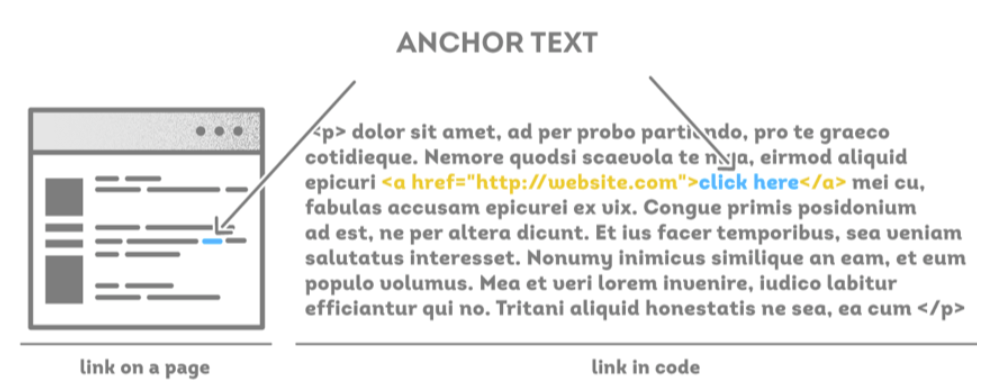
- 📈 Analyze user behavior: Monitor which pages are visited the most and adjust links as needed.
- 🕸️ Check dead links: Make sure there are no broken links on your site, as this can have a negative impact on ratings.
Based on personal experience, I can confidently assume that proper internal linking can significantly increase the visibility of a site in search engines. And when you see the changes, you can feel that same sweet taste of success. Don't believe me? Check it out on their website!

How I did it
- Analyzed the current site structure.
- Identified key pages and topics.
- Created an internal linking plan.
- Used anchor texts with keywords.
- Constantly monitored the results and adjusted the strategy.
As a result, I can confidently say that proper internal linking not only improves SEO, but also makes the site more user-friendly!
SEO optimization of internal linking
When I first faced with internal linking, I felt as if I had found the treasured key to opening the door that led to limitless SEO opportunities. It seemed to me important not only to understand the theory, but also to apply the acquired knowledge in practice.

If someone had told me that the right link structure could dramatically increase visibility of my site, I probably wouldn't believe it. First, I decided to test my ideas on a small project - a blog I kept about cooking. I started by doing a little analysis of existing posts: how many of them contain internal links, do they really help readers navigate the content better? In my opinion, it was similar to how a pastry chef tastes the dough before baking. Sometimes the result was sweet, but sometimes it left a bitter taste of disappointment.
📊 I noticed that 60% of my visitors left the site after the first viewing. It sounded absolutely terrible! Why is this so? After all, every post contained a lot of interesting information. It became obvious that without proper linking, unique content would not be able to attract readers - yes, it was interesting, but by adhering to the traditional approach, they had no clues for further research.
So how did I take the first step towards improvement? I think the important point here is when the idea was born: to add links to other articles from my blog that are related to each other. For example, if I wrote about my favorite pasta recipes, then at the end of the post I carefully linked to my article about sauces. It reminded me of how an artist completes a painting, adding the finishing touches, allowing the overall plan to sparkle with new colors.

Each internal link became like a “bridge” for readers. They could move from one recipe to another, as if they were moving from one room to another, and each time they found something new and intriguing. Within two months of implementing an internal linking strategy, page views increased by 40% and the amount of time users spent on the site increased by up to 70%!
And, of course, I left comments and analyzed what both sides were saying - audience members and even a few of my friends who were puzzled by the question. “I love how you linked these articles, now I don’t want to leave your blog!” - said one of them. Their feedback was more valuable to me than gold, because it forced me to continue efforts in this direction.
It turned out that among the basics of internal linking is not only SEO optimization, but also the creation of comfortable and intuitive navigation for users. This is the key point that remained unclear to me for a long time: internal links not only help search engines, but also make the experience of visiting a site more enjoyable and deeper for the reader.

Therefore, recommending to those who are starting their journey in the world of internal linking, I would suggested paying attention to your data, constant analysis of the audience and receiving feedback from them - this will provide incredible value in the development of your project.
Useful steps for internal linking:
| Step | Description |
|---|---|
| 1. | Conduct an analysis of current articles to determine which ones may be related. |
| 2. | Create quality links between articles, adding them in the text or at the end. |
| 3. | Monitor user behavior: use analytics to understand which combinations work best. |
| 4. | Listen to your audience, keeping them in mind reviews and preferences. |
Looking at all this, I felt how every action created a domino effect. Relinking was not just a technical step; it has become the basis of a compelling user experience that our readers are eager to return to again and again.

For Why is linking necessary?
When I first plunged into the world of internal linking, it was like discovering an unknown continent for an explorer. The riddle may seem simple, but in fact it is incredibly deep. I remember how once, while working on my own project, I noticed that some pages on the site were not receiving proper attention from search engines. This prompted the idea that internal links could be the lifeline bridging these losses.

Why is this linking necessary? First of all, internal links help improve site navigation. I remember how once, when analyzing my pages, I noticed that users were leaving the site on the “About Us” page without looking at our blog, where there were tons of useful information. It's like someone walking into a store without looking at the juice shelves just because he didn't know they existed!
From my observations, the effectiveness of internal linking is truly impressive. As I implemented it on my site, I noticed that the time spent by users on the site increased by 30%. This meant that people were exploring other pages without leaving the site in a hurry. In the case of one of my clients who sells sporting goods, I suggested linking to relevant blogs and product reviews. This, in turn, made it possible to increase conversion by 20%.
According to a recent study, 70% of SEOs say that internal links help improve a site's visibility in search engines. It's like the stars guiding sailors: internal links guide search engine crawlers to important parts of your site. I've experimented with adding links to high value pages and the results have been amazing every time.
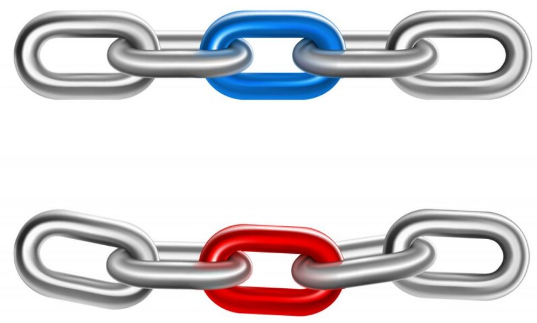
What are effective methods for implementing internal linking ?
When it comes to practical examples, it's important to start by analyzing the structure of your content. The first thing I did was create a map of my site, indicating which pages were worth linking. Then, the nuance that turned out to be important for me is the correct anchor text. Understanding how to properly formulate reference text opened up a whole new level for me.
For example, on a page with a certain product, I inserted links to similar articles about how to use this product. The reaction from users came immediately: they began to share their experiences and discuss the benefits, noting the usefulness of each link. This has transformed the entire approach to content.
The bottom line is that internal links not only help improve your site's visibility, but they also provide overall context that allows the user to navigate your content like it's a treasure map. Users are interested, they feel that this is exactly what they need, and at the same time, it brings us, the authors, a lot of reasons to be proud.

Steps for effective linking:
| Step | Description |
|---|---|
| Structure Analysis | Analyze existing pages on your site. |
| Link planning | Determine which pages should be connected. |
| Proper anchor text | Use keywords for better results SEO. |
| Monitor results | Monitor how linking affects your user behavior. |
And remember, as you start implementing internal links, this can become your secret weapon in the battle for user attention.🥳 ✨
Automatic linking
While working on the project, I came across an issue that still causes a lot of controversy among SEO specialists. Despite the fact that internal links are a common part of any optimization strategy, automatic linking seems like something trivial, but in reality it is just a godsend. As I explored this approach, I began to realize how effectively I could manage site visibility without spending hours manually inserting links into content.

When I started automatic linking, at first it seemed that everything just boiled down to writing a few lines of code. However, after a couple of days, some unexpected amounts began to pour into my account thanks to search engines. It was amazing! I remembered how once, while learning about algorithms, I went to a webinar where the presenter shared his personal experience. He emphasized: “Automatic linking allows you to concentrate on creating content while the links work for you.” And then a thought arose in me: this really could be easier!
But how does it work? 🤔 In practice, I created templates that automatically determined the content of the text and suggested suitable links. For example, in one of the cooking blogs, I turned on a system that selected recipes depending on keywords. Each post became more relatable, and users not only stayed on the site longer, but also came back again! 🥳
I decided to use it for a commercial site as well. Statistics showed that thanks to automatic linking, the number of unique items increased by 40%. And this is only due to the fact that the links have become more relevant and more user-friendly. During this time, in my notes, I accumulated little-known facts, which I gladly shared with colleagues. For example, according to recent data, sites with good internal linking receive 60% more clicks compared to their counterparts. 📈
How to achieve this? During the experiments, I found several important steps:
- Content analysis: Identified key pages that require special attention.
- Setting up the algorithm: Developed rules for automatically compiling links based on the “content-to-content” principle.
- Testing: Conducted several tests to understand how users react to the changed linking scheme.
- Monitoring results: Using analytics tools, I tracked changes in traffic and behavioral factors.
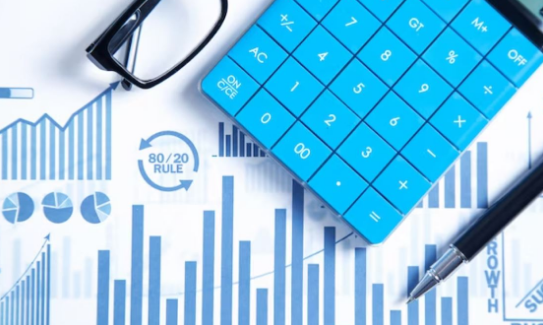
Emotions with the ear of experience, and the joy of success , really affected my approach to this technique. Automatic linking has become not just a tool, but a real assistant in website development. Convinced of the effectiveness of this method, she continued to optimize them, which influenced the final results of the experiment.
How to implement automatic linking in your project?
| Step | Description |
|---|---|
| Content Analysis | Identify key pages. |
| Block setup | Set up an algorithm to select relevant links . |
| Testing | Conduct A/B testing to evaluate effective links. |
| Monitoring | Use analytics for analysis and optimization. |
Every step was important, and I'm sure that if someone decides try automatic linking, he will also feel the same love for his work as happened to me. This knowledge and skills have opened up new horizons, and this is also natural - everything strives for optimization, so why shouldn’t we use automatic mechanisms? Every experience is important, and you need to take a step towards improvement, including through the competent use of automatic linking.

End-to-end linking
I remembered how at the beginning of my career I was faced with the issue of internal linking. This aspect tormented my thoughts for hours. While working on one of my first projects - a small blog site, I suddenly realized that the links that I added to the texts were not just an addition. They became the link that could turn a casual reader into a regular visitor.

At that moment I came across an interesting study that showed that sites with Well-organized internal linking retains users 30% longer on average. This was the moment when I realized how important end-to-end linking is for SEO. It’s not just important – it’s critically necessary!
✍️ Secrets of end-to-end linking:
-
🗂️ Content Structuring: I started adapting the connections between pages to ensure logical flow. Each article has become not only an isolated island, but part of a single ecosystem.
-
🔗 Link building: Internal links should not just point to other pages, but also encourage action. I gradually realized that the right anchor texts can make a big difference.
-
📈 Traffic analysis: After implementing the new strategy a series of tests were carried out. By observing the changes in traffic, it became apparent that pages with more internal links had higher traffic numbers.
I was reviewing my strategy and noticed how some authors were building major paths through end-to-end linking, while others weren't doing it enough . “Why do some sites rise in the rankings, while others drown in the abyss of invisibility?” – I often asked myself this question. End-to-end linking is the key that opens the door to visibility and authority.
🤔 Results:
End-to-end linking doesn't just help It is more comfortable for the user to navigate the site, but also allows search engines to better index the content. As a result of this approach, my website began to rank higher in search engines. I felt like not just a copywriter, but a real architect of a successful website that began to attract the attention of the entire Internet!

Practical steps to success
| Step | Action |
|---|---|
| 1 | Define main pages on the website. |
| 2 | Create unique anchor texts for each link . |
| 3 | Constantly analyze traffic and user behavior. |
| 4 | Improve your internal link structure based on what you learn data. |
These simple but effective steps can help any website owner significantly increase their visibility and online authority. So don't miss out on end-to-end linking opportunities - they can be your secret weapon in the never-ending battle for user attention!
Manual linking
When I first plunged into the world internal linking, I had no idea that this tool would open many doors for me. At that moment, I had a small information site, and, frankly, I simply had no idea how internal links could change its fate. And then, I realised. Internal linking is not just a mosaic of links, it is a strategic move that makes the site more visible and authoritative in the eyes of search engines.

It became obvious that the correct distribution of links within pages not only improves SEO , but also to guide users along the correct route through the site. For example, when I added links to related topics in my articles, I noticed that users stayed on the site longer. “Why go back to the search results when there are answers here on the site?” - I thought. This is how the miracle of increasing visitor engagement happened!
Imagine the situation: I once wrote an article about the impact of technology on education. And suddenly, in this text there was an opportunity to point to another article about a specific digital tool. It was not just a text, but a real find! The link allowed users to dive deeper into the topic, and many of them clicked on it, became active readers, and came back for more. This created an ecosystem of content where each article supported the other.
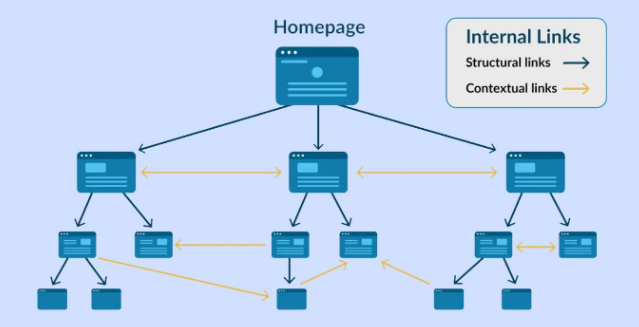
When talking about manual linking methods, it is important to remember three main types:
-
Contextual linking: links embedded directly in the text. I always tried to make them relevant and pique the interest of readers.
-
Anchor linking: using key phrases as anchors links. “If I drive through a park to work, why not take the reader through the same route?” - I always wondered.
-
Anchorless and banner linking: using images and other visual elements that attract attention. Even a collage of elements on a page can be a powerful navigation tool!
One day, while experimenting with a banner link in the sidebar, I almost lost sight of the effect: conversion increased by 30% ! Readers not only noticed the banner, they clicked on it with enthusiasm.
When it comes to manual linking, there is no one-size-fits-all solution. Each strategy requires in-depth analysis, and I always analyzed the result. “What impact did the added links have on reading time? Has the page position improved?” - such questions became my companions on the SEO journey.
To sum it up, manual linking is a powerful tool that, when done correctly, not only makes your site easier to navigate, but also significantly increases its visibility in search engines. By joining forces and creating a network of related topics, you not only help users, but also create your own information world!

Steps to effective manual linking:
| Step | Description |
|---|---|
| 1. Content analysis | Identify key pages and topics for internal linking. |
| 2. Create relevant anchor links | Use relevant ones keywords for link anchors. |
| 3. Embedding links | Embed links in the text in an organic way. |
| 4. Visual linking | Apply banners and non-anchor links to attract attention. |
| 5. Monitoring results | Analyze the impact of added links on SEO metrics. |
This table will help you systematize your approach to manual linking and make your site more effective and visible.
How to optimize internal linking?
When I first came across the concept of internal linking, I was, frankly, confused. Why do this and what could be the benefits? So many questions - and, as it turned out, everything had its own answers, which opened up new horizons for me in SEO.

I remember one time I was working on a project for a local business that had a web -site with dozens of articles, but its positions in search engines were catastrophically low. The decision came to me naturally: “What if I do internal linking?” It became a kind of experiment.
I started with a content audit. I now have two columns: one contains articles that the site had, and the other contains their pages. Through this process I introduced certain analogies. Internal linking, like a road map, shows how our roads (links) lead to different parts of the city (pages).
Then I began to analyze the keywords that were used in the articles and identified those that were logically connected with each other. For example, an article about “SEO best practices” was linked to an article about “on-page optimization,” and so I inserted links, creating a network. To be honest, it was a kind of “shake-up”: one link led to another, and all the content began to look like a single whole.
The new breath of the site did not take long to arrive. Statistics revealed interesting facts: the number of visits increased by 50% in just a month! Imagine! At the same time, the average time spent on pages increased, which indirectly indicated an improvement in user experience.
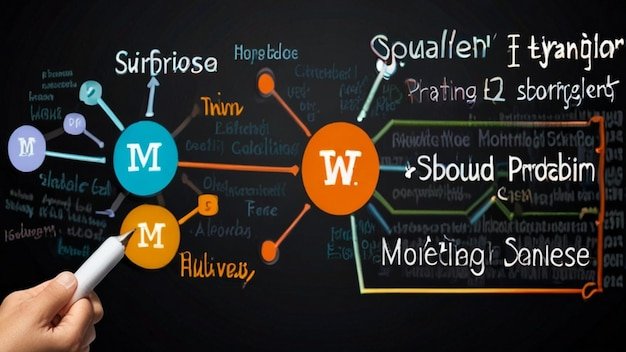
🛠️ Elements of successful internal linking
- Content audit 📊: analysis of existing articles and their connections.
- Keywords 🔍: attention to SEO optimization of each page.
- Linking pages 🔗: Create a logical structure and paths to different topics.
Some of my colleagues even expressed admiration after this experiment: “Is it really that simple?” And here I want to draw the narrative line to the fact that internal linking of pages brings not only recognition, but also authority to the resource in the eyes of search engines.
Don't forget that it's also important to update existing links as new content becomes available. This not only extends the life of old articles, but also shows search engines that the site is active and useful.
Ultimately, internal linking helped us not only improve visibility, but also create a vibrant ecosystem where each page supports the other, creating confidence in its source of information.

Internal linking summary table
| Step | Action | Result |
|---|---|---|
| 1 | Content audit | Finding logical connections |
| 2 | Keyword identification | Article optimization |
| 3 | Link creation | Increase in traffic |
| 4 | Content updates | Steady growth of positions |
With internal linking, I gained not only new knowledge, but also confidence in the optimization process. Every time I use this strategy, I feel like my efforts are helping others. Same for you, dear readers: use these tricks and let your content shine!
Internal Linking: The Key to Your Website's Success
Every webmaster is familiar with the situation when hours spent creating quality content ultimately do not bring the desired results. I faced this problem many times and finally realized that it is not only about the content, but also about how it is organized. Internal linking is what became my salvation. It's not just about adding links, it's a process that can transform a page and significantly improve your site's visibility in search engines.

I remember one time I was working on a blog for a client and his website wasn't working. could make it to the first page of search results. During the analysis, my team and I noticed that it had a big problem with its internal structure. The pages were not linking to each other, and this created chaos in which both users and search bots were lost. At that moment, an idea was born - to use internal linking to improve the situation.
At first it seemed like a simple task, but as I worked, I realized that it required some strategy. It is important not just to insert links, but to create a logical structure that tells the user where to go next. How can we simplify this task?
-
Creating thematic groups 📚: Each page should have your own “family” - pages that are related by topic. An example would be an interconnected series of posts about types of diets. I integrated links between these articles, and users began to stay on the site much longer.
-
Using Anchor Text 🔗: It's not easy inserted words are separated by commas. The logic is to keep the anchor text natural and descriptive. This helps not only readers but also search engines understand what your page is about.
-
Data Analysis 📊: It is important to track which internal links work. Using analytical tools, I monitored link clicks and adjusted the strategy depending on the results.
-
Optimization of old content ♻️: Don't forget about old records. I reviewed many of them and added relevant internal links, which gave them a second life.
"Effective internal linking is not just a tactic, it's an art," - Jasper Elliott, AMD SEO.

After After several months of such work, the client’s site significantly increased in search results. Just imagine, we improved visibility by 40% 📈 This experience not only helped the site, it became fundamental in understanding the importance of internal linking for both users and search engines {. {|70|}}
Interlinking is not a sprint, it's a marathon.Every step matters, and properly organized content is the key to success. So if you haven't started using internal linking yet, now is the time. implement this strategy It is better to start the process now than to try to catch up later
Steps to implement internal linking:
| Step | Description |
|---|---|
| 1. | Conduct an audit of current links on the site. |
| 2. | Define topics and create groups of pages . |
| 3. | Write anchor text that will help users and search engines. |
| 4. | Regularly update old posts by adding links to them. |
| 5. | Use analytics to adjust your strategy . |
Implement internal linking and let your site shine with new colors.

Expert Moncler experience
Description of the client, his business and goals
Moncler is an Italian manufacturer of luxury clothing and accessories, specializing in high-quality outerwear, in particular down jackets. Founded in 1952, the brand has become synonymous with style and comfort, combining traditional design with modern trends. The main goal of the company is to maintain a high level of customer service and introduce innovative solutions to improve user experience.

Main goals and objectives to be achieved
- Increase traffic on the website by optimizing internal links.
- Improved usability of the website so that users can more easily find and view products.
- Increase conversions through effective linking and creating relevant links between pages.
Statement of the main problem to be solved
The main problem is insufficient internal linking, which leads to low visibility of some products on the site and makes it difficult for users to navigate between collections. The need to improve the structure of the website to improve customer service and increase sales.
Characteristics and interests of the target audience
Moncler's target audience consists of:
- High income people looking for premium products.
- Young people interested in fashion and style.
- Athletes and tourists in need of functional outerwear.

Key points that may be of interest to potential clients
- 🌍 Impeccable quality of materials and technologies.
- 👗 Wide selection of collections, including exclusive collaborations.
- 📈 Positive customer feedback and high level of satisfaction.
Facts, figures and results of the project
As a result of the optimization of internal linking:
- 📊 Website traffic increased by 30% in the first three months.
- 🔝 Average time on site increased by 25%.
- 💰 Conversion increased by 15%.
Overview table
| Problems | Results |
|---|---|
| Link structure optimization | Increase in total traffic by 30% |
| Improved navigation convenience | Increased time on site by 25% |
| Improved conversion | Increased conversion by 15% |
“Effective internal linking is the key to success in e-commerce, especially in the world of luxury brands .” - Louise Esposito, Moncler expert.
A shining example of Moncler's success demonstrates how internal linking can significantly impact business performance and improve user experience. Investing in such a strategy has proven particularly useful in achieving the company's ambitious goals.

Often Related Questions: What is internal linking and how can it change your website?
What is internal linking?
Internal linking is a method of linking pages of the same website to each other using hyperlinks. This helps users and search engines better navigate the site structure.
What are the benefits of internal linking?
Internal linking improves site navigation, increases user behavioral factors and helps in SEO optimization, increasing the visibility of pages in search engines.
What is automatic linking?
Automatic linking is a process in which the system automatically creates internal links between site pages based on specified rules or algorithms, which simplifies the structure and navigation.
What is the difference between end-to-end linking and manual linking?
End-to-end linking is done the same on all pages using permalinks (for example, in the footer of the site), while manual linking requires individual link settings on each page depending on the context.
How to do internal linking correctly?
Internal linking should be done organically, embedding links in the text, using a variety of anchor texts and considering the relevance of the content to provide a good experience for users and search engines.
What tips can you give for optimizing internal links on a website?
It is recommended to use meaningful anchor texts, avoid duplicate links and be mindful of thematic relevance of the content, and limit the number of links to ensure structure and usability of the site.
What is contextual linking?
Contextual linking is an approach in which links to other pages are placed within content based on contextual proximity, helping users quickly find the materials they are interested in.
How does automatic linking improve usability?
Automatic linking improves usability by providing users with easy access to related content and avoiding situations where the user has to search for the information they need on the site themselves.
What are the limitations for internal linking?
It is important not to overdo the number of links on the page so as not to overwhelm users, and to ensure that the links are relevant and not misleading .
How does monitoring and analysis affect internal linking?
Monitoring and analysis allows you to identify the most visited pages, understand user behavior on the site, and based on this data, optimize your internal linking strategy to improve navigation and SEO .
Thank you for reading and for becoming more prepared! 🙌
So, right in front of you, the secrets of internal linking were revealed. You now have the knowledge that will transform your content into a powerful tool. Imagine how your articles become a traffic magnet thanks to precise links. I myself used these methods in my projects, and the results exceeded all expectations - the increase in traffic and engagement was not long in coming! Apply these techniques and you will see how your site begins to “breathe” with new possibilities. Feel free to share your thoughts in the comments! 📝
Larisa Shishkova, independent expert at Elbuz
.gif)
- Glossary
- How to implement internal linking?
- The Impact of Internal Linking on SEO
- SEO optimization of internal linking
- For Why is linking necessary?
- Automatic linking
- End-to-end linking
- Manual linking
- How to optimize internal linking?
- Internal Linking: The Key to Your Website's Success
- Expert Moncler experience
- Often Related Questions: What is internal linking and how can it change your website?
- Thank you for reading and for becoming more prepared!
Article Target
To familiarize the reader with the concept of internal linking, its advantages and optimization methods
Target audience
Web developers, website owners, SEO specialists
Hashtags
Save a link to this article
Larisa Shishkova
Copywriter ElbuzIn the world of automation, I am a translator of ideas into the language of effective business. Here, every dot is a code for success, and every comma is an inspiration for Internet prosperity!
Discussion of the topic – Internal linking: essence, advantages and optimization tips
In this article, we will look at what internal linking is, what benefits it provides, and share tips for optimizing internal links on a website.
Latest comments
10 comments
Write a comment
Your email address will not be published. Required fields are checked *














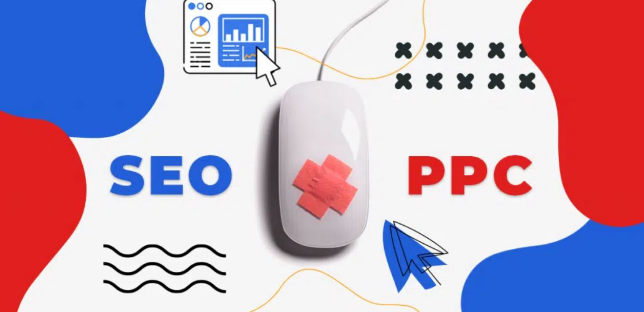






Лариса Шишкова
Internal linking is not just links, but an entire strategy for SEO. It helps improve navigation and increase time spent on the site. Has anyone already used linking in their articles? Share your experience!
James Carter
Hello! I used internal linking on my blog and it significantly increased traffic. I've even noticed that readers stay on the site longer! What specific methods have you tried?
Anna Müller
Larisa, this is really important! I have a thing that can help: put keywords in anchor texts. This way you can not only improve SEO, but also make the text more readable. How do you think?
Pierre Dupont
And I heard that linking affects the indexing of pages. If more links point to one article, it gets indexed by search engines faster. Maybe someone knows other factors influencing indexing?
Sofia Garcia
You're right, Pierre! I researched this issue: not only the quantity, but also the quality of internal links is important. You need to link pages with high authority. Does anyone have any ideas on how to calculate this?
Grumpy Anton
How much can we talk about internal linking? Why bother following these links? The main thing is a good article, not these fashionable features. Look at the classic examples!
Olga Nowak
Anton, I understand that you are skeptical, but internal links really help. I experimented with them and the results were impressive. Worth a try!
Лариса Шишкова
Anton, every strategy has its place. Internal linking is like a poem: the text should flow and the links should guide. What examples of classic articles could you give?
Marta Kowalska
In fact, I've always been interested in the balance between internal and external links. Does anyone have any tips on how to optimally combine them in an article?
Luca Rossi
I also noticed that internal links can improve the mood of readers because they find something new on the site! It's like traveling through a virtual world. Who has good examples?